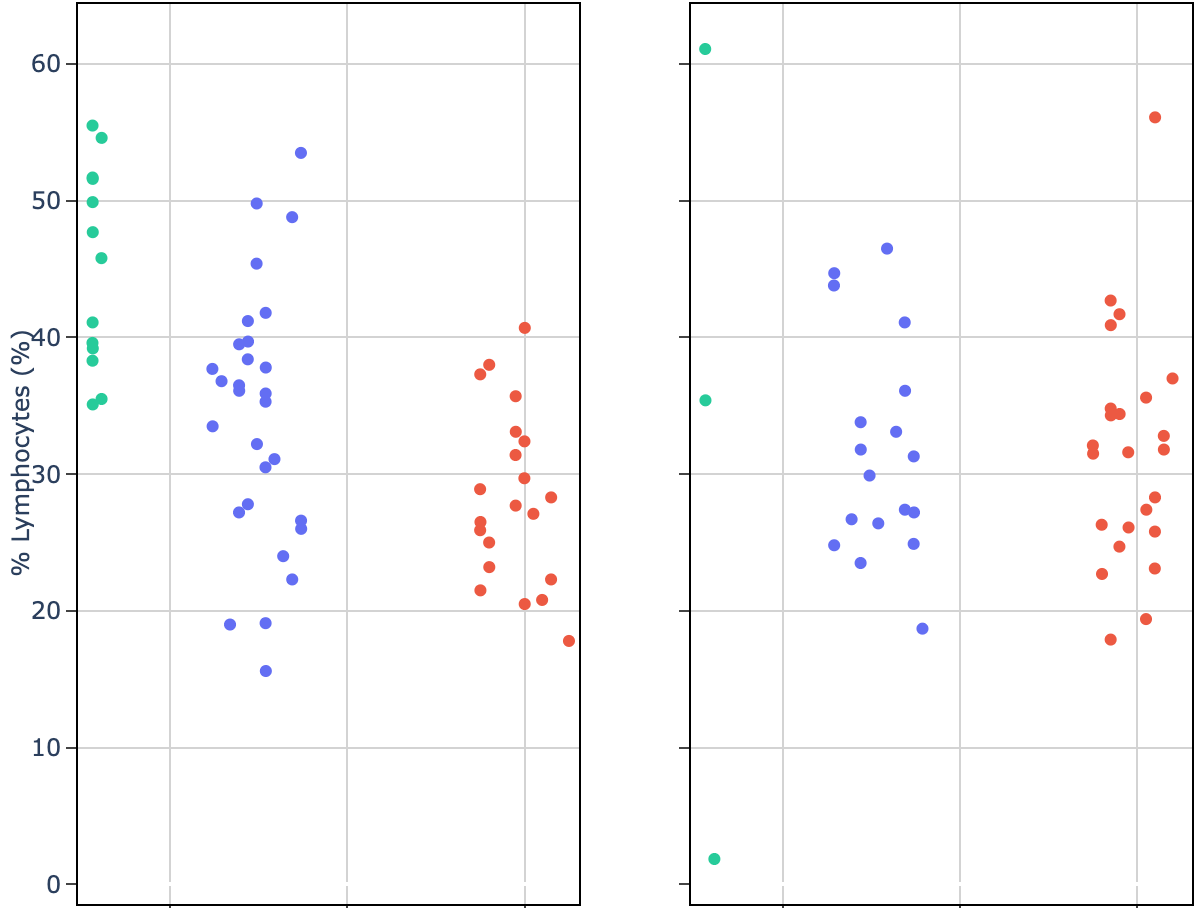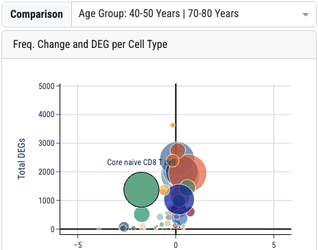Immune aging is a dynamic process driven by complex internal and external interactions. We examined the healthy human immune system across age using deep molecular profiling .
To do so, we used our Human Immune Health Atlas to label peripheral blood mononuclear cells (PBMCs) from a prospective, longitudinally sampled cohort of healthy young adults (n=49, 25-35 years) and older adults (n=47, 55-65 years) followed over the course of 2-3 years in collaboration with the Benaroya Research Institute: The Sound Life cohort. This cohort was observed under homeostatic conditions, as well as prior to, and at 7 and 90 days following, annual influenza vaccinations, resulting in a scRNA-seq dataset with over 13.5 million PBMCs.
We also studied a cohort of 234 healthy adults ranging in age from 40 to 90+ years old with blood draws at a single time point from the Immunobiology of Aging cohort in collaboration with Stanford University.
Our study highlights that gradual, age-related alterations in the homeostatic transcriptional networks of immune cells lead to shifts in immune responsiveness as we age. Additional details can be found in our article in Nature:
For additional details about the cohort, experimental and analysis methods, reproducibility, citation and contributors, and data available to download, see the subsections of this project listed on the left.
To enable exploration of this rich, longitudinal dataset, we provide the following interactive visualization tools for both the Sound Life cohort and the Immunobiology of Aging cohort. Click on the header tabs to see tools relevant for each cohort:
Interactively explore millions of cells from our Sound Life scRNA-seq dataset for each major cell class:
Visualize both variation in cell type abundance and gene expression sampled across 9 time points from our subjects.
Explore Longitudinal DataExamine cell type-specific differences in gene expression due to age group, CMV infection status, or biological sex.
Explore Differential ExpressionInvestigate sample metadata and clinical lab results, including complete blood count, metabolic panel, and lipid panel generated for all subjects.
Explore Clinical DataVisualize both variation in cell type abundance and gene expression as a function of age in the Immunobiology of Aging cohort.
Explore Aging DataInteractively visualize > 3.7 million PBMCs from the Immunobiology of Aging cohort.
Explore Aging UMAP




